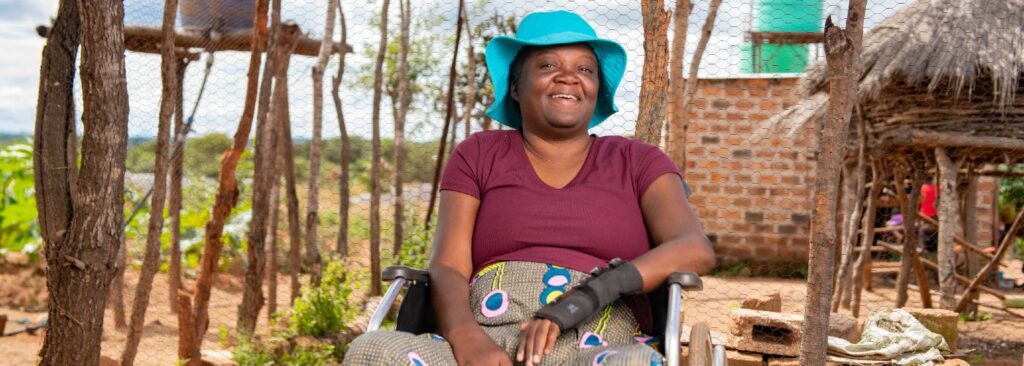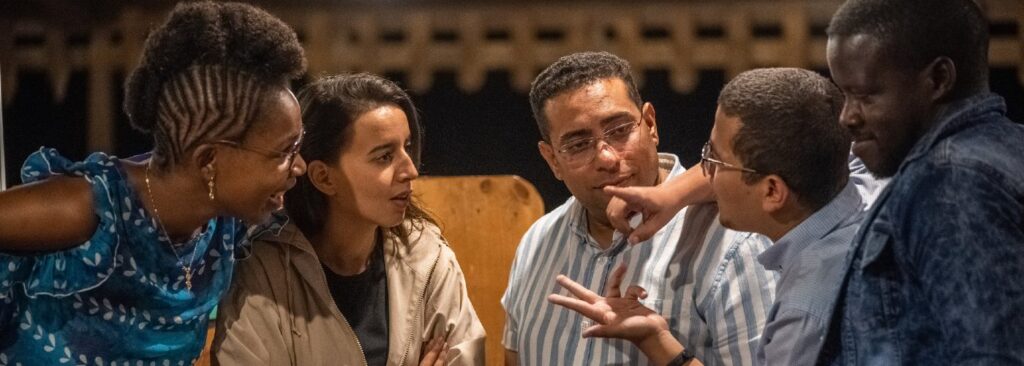Mapping the future of a just transition in Africa
Hivos and the Challenge Fund for Youth Employment collaborated with New Silk Roads and ElRehla to organize a Futures Lab in Sinai – Egypt, to explore the future of just green transitions in Africa.
The Lab was organized on the heels of COP 27 and convened pioneering entrepreneurs, scientists, climate enthusiasts, techies, investors, and civil society members from countries such as Algeria, Egypt, Kenya, Sudan, Tunisia, Palestine and Uganda.
Participants engaged in a “futures thinking” approach to construct four hopeful scenarios for localized climate adaptation to support the health of the planet, people, and societies. Here you can explore the four scenarios that were developed during the Futures Lab.
1. Green sense is business sense
This scenario tells the story of Jua Safi, the director of a family business, the Impact Hustlers, which specializes in circular farming in Kenya. Narrated at the thirty-year celebration of its operations, the story tells how Jua shifted Impact Hustlers’ focus to prioritize people, planet, and profit. They started reusing resources and integrating green practices. This way, they were able to create multiple income streams by selling directly to local communities and promoting environmental awareness.
People now understand that businesses should be built on the golden three Ps: people, planet, and profit.
2. Balancing power: every voice counts
Joanna Simaloi Is a cultural leader of a Masai tribe in Southern Kenya. She is a representative of the Kenyan Climate Alliance, which is an active member of the Pan-African Climate Justice Alliance (PACJA). This scenario tells how PACJA will be voicing the needs and expectations of everyone in Africa, including local communities that have been disproportionately affected by climate change. PACJA will develop regional incentive and penalty frameworks that keep governments and corporations accountable and aligned with the resolutions of the Climate Convention of 2042.
“Now I live in a world where people like myself and my family—those most affected by climate change—have a voice and decision-making powers to influence the biggest polluters most responsible for this mass destruction and hold them accountable,” says Joanna.

3. Mimicking nature by human design
This scenario envisions a future where food systems and agriculture in the Middle East and North Africa operate in a circular economy with inclusive policies that prioritize sustainability. People’s behavioral patterns and consumption trends are connected to a high-tech supply and demand value chain. Waste is now called food residue, and there is data transparency across all levels, from the consumer to corporations. The use of EcoCoins is widespread. By assigning value to land, gardens, forests, and farms, the coins financially reward individuals, farmers, and cities that contribute to a more circular economy.
4. Think local and impact the globe
This scenario takes place in 2050 and follows a family residing in a Mediterranean city. They begin their day using technology to adopt eco-friendly habits like limiting water usage. The daughter attends an environmental class in a nearby park while her mother hosts a permaculture workshop for the community. Later in the day, the family attends a town hall meeting about a sustainable project led by the new mayor that preserves local knowledge and constructs carbon-free buildings. The town is striving to achieve self-sufficiency in food and water production, and has already made strides towards that end.
About the artist
The cover photo and all illustrations in Reclaimed Lands are by Sabah Elhadid, an interdisciplinary artist, researcher, and graphic designer based in Cairo, Egypt.









